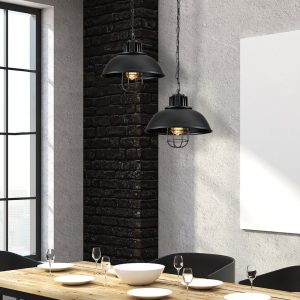
Introduction
When it comes to interior decoration, lighting plays a crucial role in creating the ambiance of a room. One popular lighting fixture that has stood the test of time is the Tiffany lightshade. These exquisite lightshades have been around for over a century and are still highly sought after today. In this article, we delve into the history, craftsmanship, and enduring appeal of the Tiffany lightshade.
History of Tiffany Lightshades
Tiffany lightshades were first introduced in the late 1800s by Louis Comfort Tiffany, an American artist and decorator. Tiffany was fascinated by glass and spent many years experimenting with different techniques to create unique pieces of art. One of his most popular creations was the Tiffany lightshade.
The first Tiffany lightshades were made using the copper foil technique. This method involves wrapping narrow strips of copper foil around the edges of each piece of glass and then soldering them together. This created a strong and durable shade with beautiful, intricate designs.
Tiffany lightshades quickly became popular, especially in wealthy households. They were considered a status symbol and were often found in grand homes, museums, and even public buildings. Today, Tiffany lightshades are considered a timeless classic that can add beauty and elegance to any setting.
The Craftsmanship of Tiffany Lightshades
Tiffany lightshades are known for their exquisite craftsmanship. Each shade is made using high-quality materials and meticulous attention to detail. The glass used to make Tiffany lightshades is carefully chosen for its color, texture, and translucency. Each piece of glass is then cut by hand and fitted together like a puzzle to create the final design.
One of the most impressive aspects of Tiffany lightshades is the number of pieces of glass used to make them. Some shades can contain hundreds or even thousands of individual pieces of glass, all carefully fitted together to create a stunning work of art.
The copper foil technique used to make Tiffany lightshades is a labor-intensive process that requires a great deal of skill and patience. Each piece of glass must be carefully wrapped in copper foil and then soldered together to create a durable shade. This process can take several weeks or even months to complete, depending on the size and complexity of the shade.
The Enduring Appeal of Tiffany Lightshades
Despite being over a century old, Tiffany lightshades still have a timeless appeal that continues to captivate people today. Their intricate designs, vibrant colors, and exquisite craftsmanship make them a popular choice for anyone looking to add elegance and beauty to their home or office.
Tiffany lightshades are also very versatile. They come in a wide variety of shapes, sizes, and styles to suit any taste or decor. Whether you want a small accent lamp for your bedside table or a large chandelier for your dining room, there is a Tiffany lightshade out there for you.
Another reason for the enduring appeal of Tiffany lightshades is their ability to adapt to changing trends. While the basic design of a Tiffany lightshade has remained the same over the years, there have been many variations on the original theme. Modern designers have experimented with different colors, shapes, and patterns to create new and exciting interpretations of the classic Tiffany lightshade.







